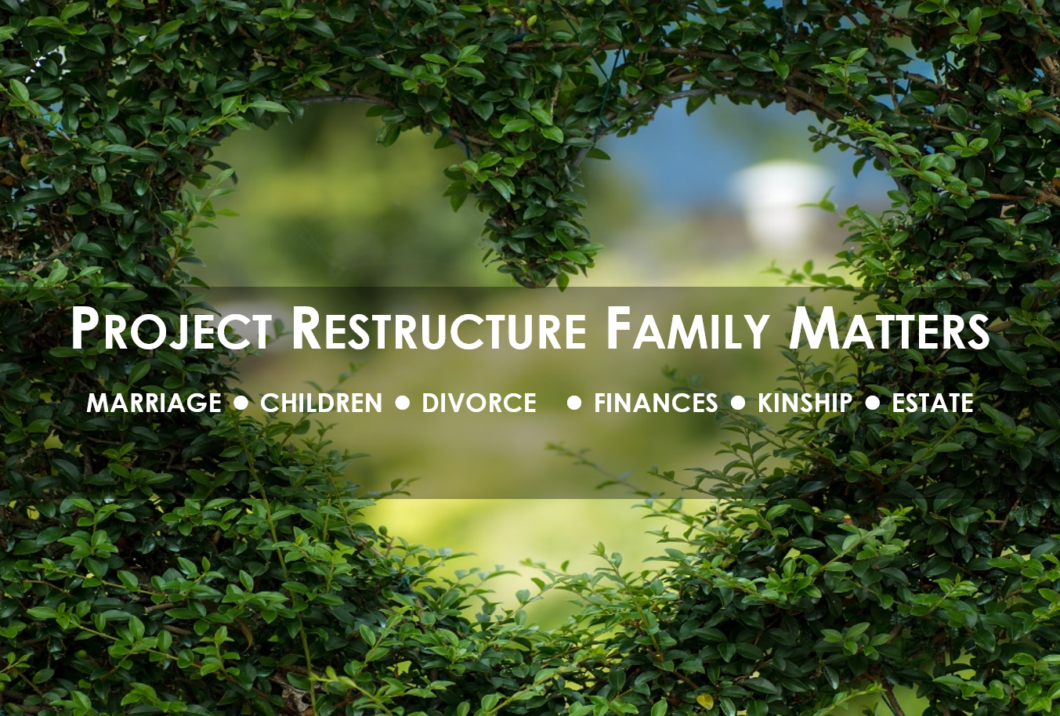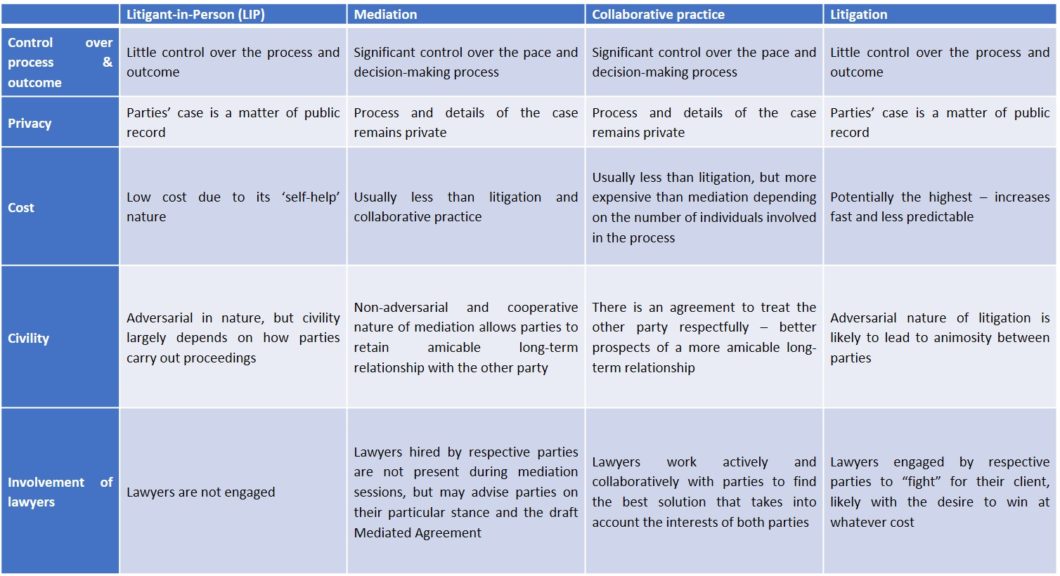
This article is the third part of a series on the different ways divorce can be settled. This article was written by Daryl Er (an intern of OTP Law Corporation) and Emelia Kwa (a trainee of OTP Law Corporation).
The last dispute resolution mechanism to be considered is litigation. This is the traditional legal process where parties engage lawyers to provide legal advice and advocate their position before the court, who will make the final decision.
Litigation is the most conflictual and rigid of the four methods, as parties and their lawyers each have to craft legal arguments and present a case which puts them in their best light (usually while making the other party look their worst), in order to get the best chances of obtaining their desired result. Parties are bound by the court’s rules and timetables, usually making litigation a lengthy process. However, at the end, the outcome is rarely a total ‘win’ for either party – there will typically be some compromise.
Further, parties will have to gather relevant evidence and argue their case within the confines of statutes and precedent derived from case law, where many emotional factors will not be taken into consideration by the court. Relevant information from both parties must necessarily be produced during the ‘discovery’ process.
Note: These days, divorcing parties may not immediately head to the courts. Instead, parents with children below the age of 21 must first undergo compulsory mediation.
Pros
First, litigation can be effective against parties who are uncooperative. For example, Party A may not comply with the rules or timelines of the court, or may even disobey court orders. In response, the Party B can make applications to the court to make binding orders on Party A to get them to comply. Further, courts may enforce discovery of necessary information and impose sanctions of failure to comply.
Second, leaving the eventual decision to the courts ensures a fair outcome (although it may not necessarily be the best one for the parties). Where pre-trial mediation and negotiation falls through, judges are highly-trained neutral third-parties who will decide the case based on the evidence, effectively putting an end to the dispute.
Lastly, litigation levels the playing field for parties – the presence of lawyers throughout every stage of the process ensures that no party will have any undue influence over the other.
Cons
However, the shortcomings of litigation usually outweigh the benefits. First, litigation is a very costly and time-consuming process. Having to adhere to the court’s timetable and deadlines, the process may drag on well beyond what parties would expect, especially in contentious cases. Here, the expenditure of both money and time may take a toll on the emotional and financial well-being of parties. This is compounded where parties appeal the judgment or seek a variation of the court order given.
Second, litigation is also likely to create resentment between the parties and thus make it difficult to maintain an amicable relationship between parties. This will undoubtedly have a negative effect on any children where animosity between their parents extends beyond the divorce proceedings.
Further, due to the adversarial nature of litigation, court judgments and orders will naturally favour one party or the other. Moreover, judges are bound by the law in making decisions and orders, as well as the evidence before them. This ignores many other ‘human’ factors which come into play, and which can be considered should parties opt for mediation or collaborative practice instead.
Best for…
Given the high-cost nature of litigation, this method is perhaps best used as a last resort. To that extent, it is most effective in situations where parties are uncooperative (e.g. if a party suspects the other is hiding assets, etc.); where there is a high chance of other methods failing, such as if other parties are unwilling to mediate; or where parties have domineering spouses, and are fearful to speak for themselves. Further, it is also best suited for parties who want a third-party to settle disputes for them, and are open to any ruling which may result.
So, which is the best method for resolving divorces?
Undoubtedly, it is difficult for most contested divorces to be truly ‘peaceful’ or ‘amicable’ – if it was, perhaps divorce shouldn’t be on the table in the first place. Disagreements and arguments will likely arise during whichever process parties choose. However, of greater concern is how parties would like to move forward and move on, taking into consideration their unique individual circumstances. While there is no best method for dispute resolution, choosing the right forum to settle any issues will play a large role in how satisfied parties are with the divorce process. In that respect, it is ultimately up to parties to consider what they truly want following the divorce and choose the forum which best addresses their interests.
Conclusion Table



